Note that Barracuda Cloud Archiving Service follows the lifecycle policy of each supported vendor and does not guarantee support for versions that are end of life or end of support as indicated by the product vendor.
Note: If you have not completed the initial setup and user configuration, see the Getting Started section to activate the service and add users:
Note: Barracuda Cloud Archiving Service (BCAS) supports journaling from a single mail organization to only one BCAS account; journaling to multiple BCAS accounts is not supported. Beginning August 14, 2025, journaled mail is delivered solely to the first BCAS account in the recipient list.
Ensure your configuration maintains a one-to-one mapping between the journaling address and the associated BCAS account.
Microsoft Exchange allows a Journal recipient to be either a mailbox or contact. By using a contact with an email address that is part of a non-existent domain, you can create a send connector that uses SMTP to deliver journaled mail to the Barracuda Cloud Archiving Service. Use the steps in this article to configure Envelope Journaling.
Use the examples included in this article to simplify troubleshooting. Note that you can cut and paste the shell commands directly from this article.
Option 1. Configure Journaling via Script
Go to the Mail Sources > SMTP journaling page.
Go to Journaling Setup Scripts > Exchange 2013 - Standard Journaling.
Click Show Script to copy the script to your clipboard, or click Download to save the PowerShell script to your local system.
Open Exchange PowerShell, and run the script to configure Microsoft Exchange Server 2013+ to journal mail to the Barracuda Cloud Archiving Service.
Option 2. Manually Configure Journaling
Step 1. Create Mail Contact
The Mail Contact is the account that is to act as a "holding location" for journaled messages. The email address associated with this account is the designated recipient.
Log in to the Barracuda Cloud Archiving Service, and copy your journaling address from the Mail Sources > SMTP Journaling page:
Log in to the Exchange Admin Center (EAC), and in the left pane, click recipients > contacts.
Click the + symbol, and click Mail contact.
In the new mail contact window, enter Journaling in the First name field, and Contact in the Last name field. The Display name field automatically populates.
Enter JournalingContact in the Alias field (no spaces), and paste the journaling address copied from the Mail Sources > SMTP Journaling page into the External email address field:
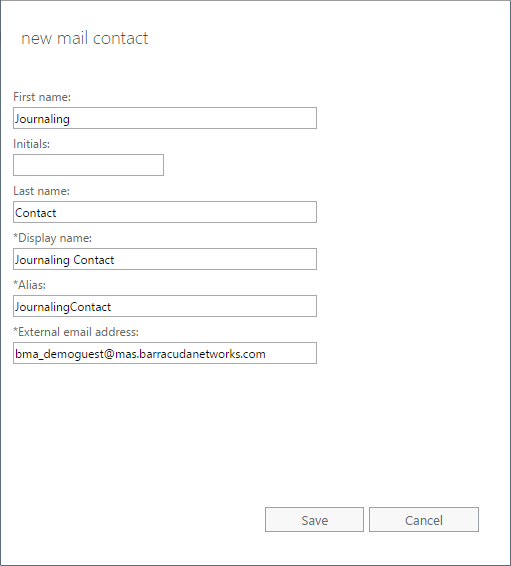
Click Save.
Remote Domain
In previous versions of Exchange Server, the Exchange Management Console (EMC) was used to create a Remote Domain; in Exchange Server 2013+ the ECP/EAC has no analogous functionality so you must use PowerShell to create the Remote Domain.
Step 2. Configure Journaling
Use your region-specific MAS hostname, for example: mas.barracudanetworks.com
See Data Centers by Region for a list of region-specific MAS hostnames.
Log into your Exchange Server and open the Exchange Management Shell.
Execute the following command to create the remote domain; this command ensures TNEF encoding is disabled, where mas.barracudanetworks.com represents the domain in your journaling address, for example:
New-RemoteDomain -DomainName mas.barracudanetworks.com -Name "Cloud Archiver Domain"
Next, execute the following command to enable auto-forwarding:
Get-RemoteDomain | Where {$_.DomainName -eq "mas.barracudanetworks.com"} | Set-RemoteDomain -TNEFEnabled $false -AutoForwardEnabled $true
Enter the following command to verify the settings:
Get-RemoteDomain | Where {$_.DomainName -eq "mas.barracudanetworks.com"} |Format-table Name, DomainName, TNEFEnabled, AutoForwardEnabled
To route journaled mail that is sent to the contact to the Barracuda Cloud Archiving Service, use the following steps to create a Send Connector for the Remote Domain:
Log into the EAC and click mail flow in the left pane, select send connectors at the top of the page, and then click the + symbol to create a new send connector:
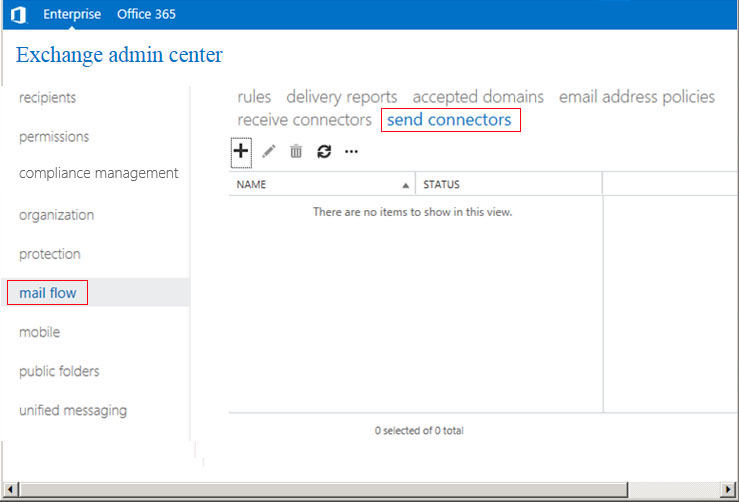
In the Name field, enter a name for the connector, and in the Type section, select Custom:
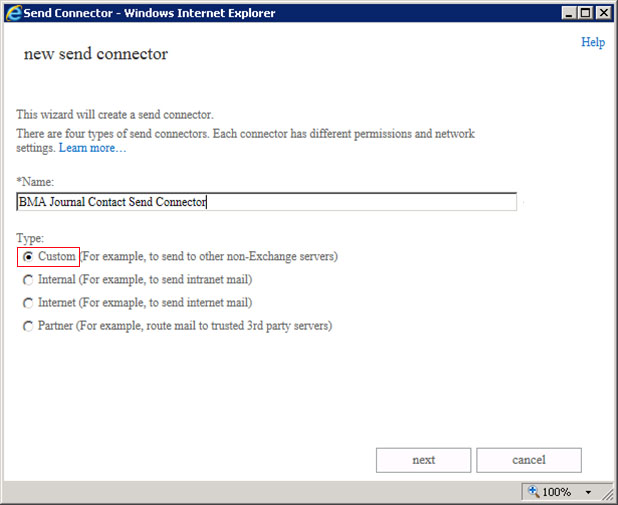
Click next. (Recommended) In the Network settings page, select MX record associated with recipient domain.
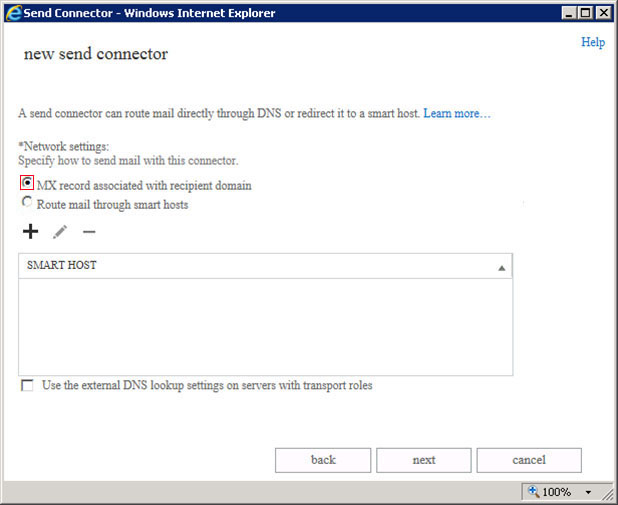
Click next. In the Smart host authentication page, because authentication is not used on the smart host connection to the Barracuda Cloud Archiving Service, no changes are necessary; click next:
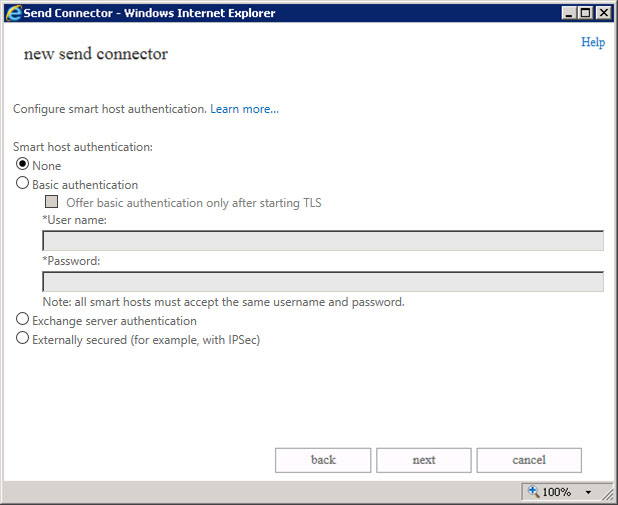
In the Address space section, click the + symbol:
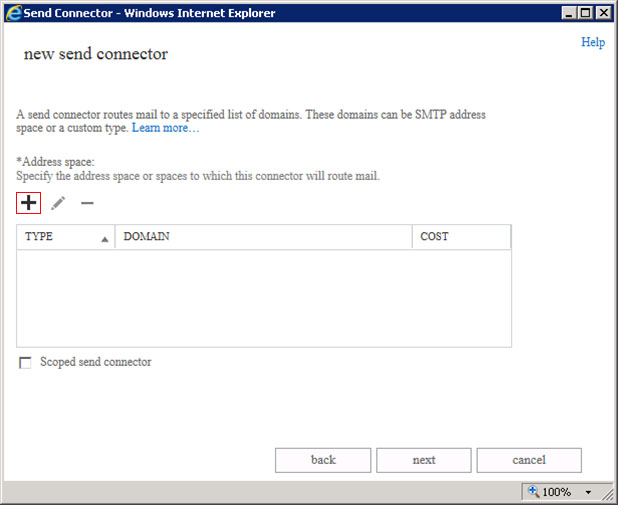
In the Address Space page, enter the domain portion of your journaling address:
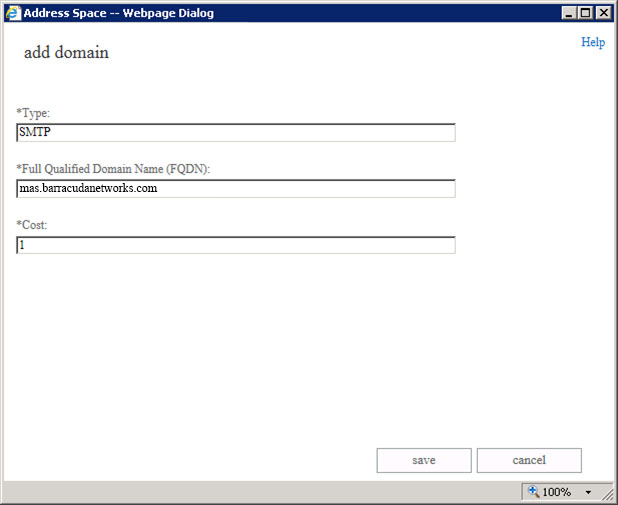
The domain is added to the Address space list:
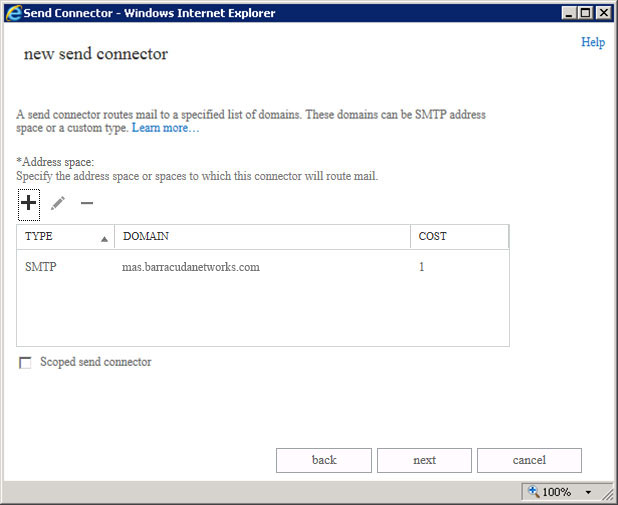
Click next. In the Source server section, click the + symbol:
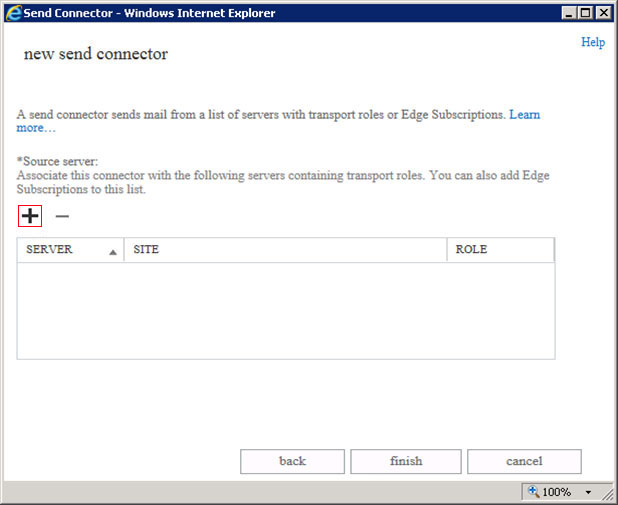
Verify all of the appropriate Exchange Servers are listed; click add to add additional servers:
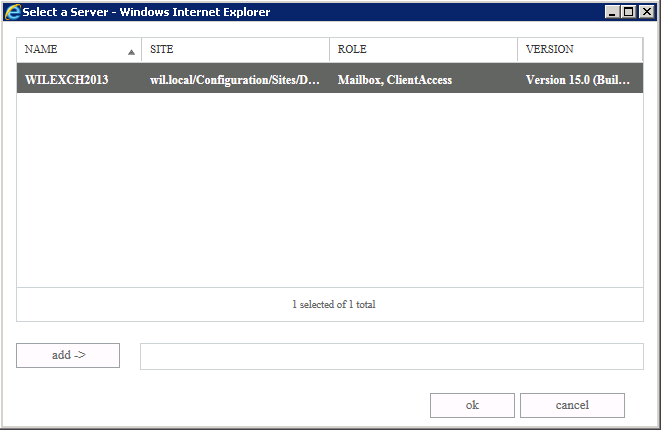
Click OK. In the Source server page, the selected servers display:

Click finish. The new send connector displays as Enabled in the send connectors list:
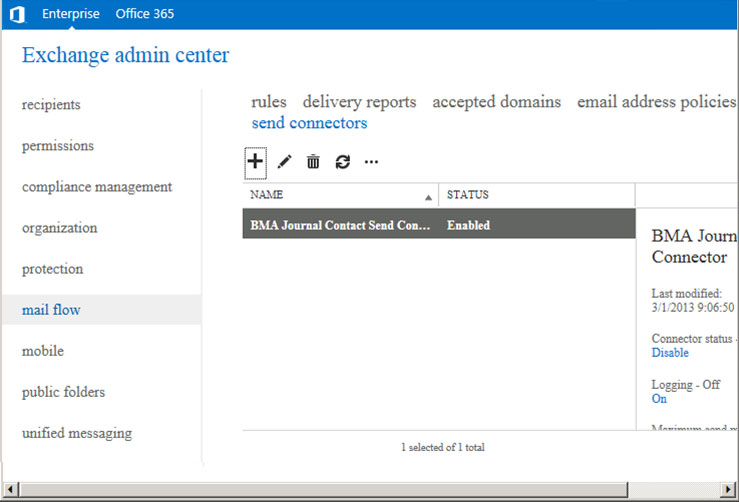
Click the Edit icon to edit the Send Connector properties. From the Maximum send message size (MB) drop-down list, select unlimited, and then click save:
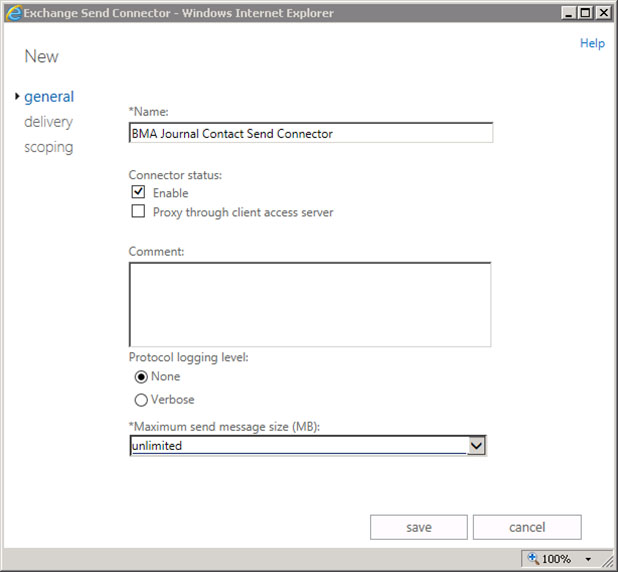
Step 3. Set Up Mailbox Database Journaling
Use the following steps to set up mailbox database journaling:
You must complete all of the steps in this section for each Exchange Email Database.
Log into the EAC and click servers in the left pane, select database at the top of the page, and then click the Edit ( ) icon to edit the database properties:
) icon to edit the database properties:
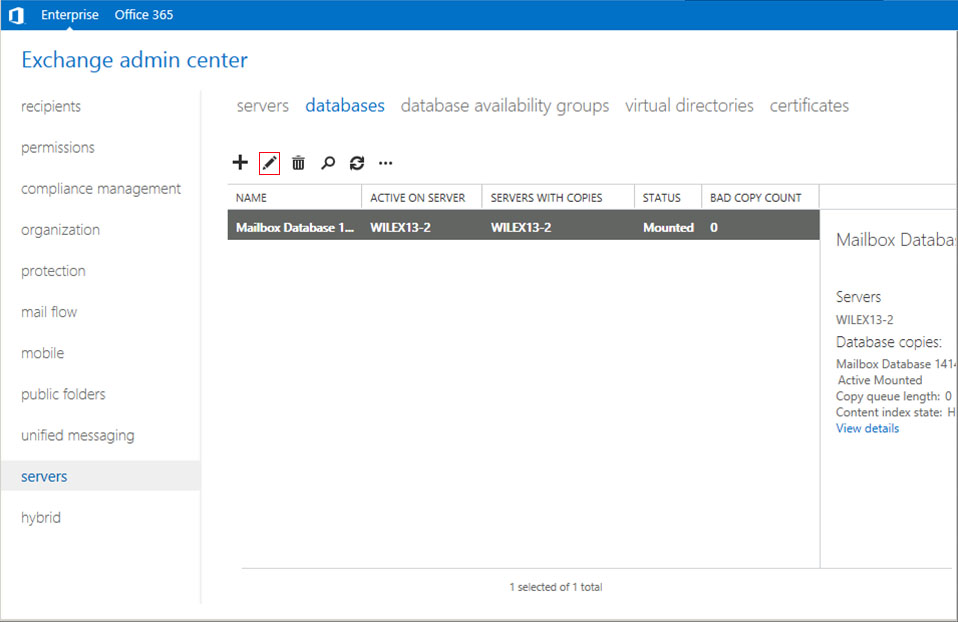
In the Properties page, click maintenance in the left pane:
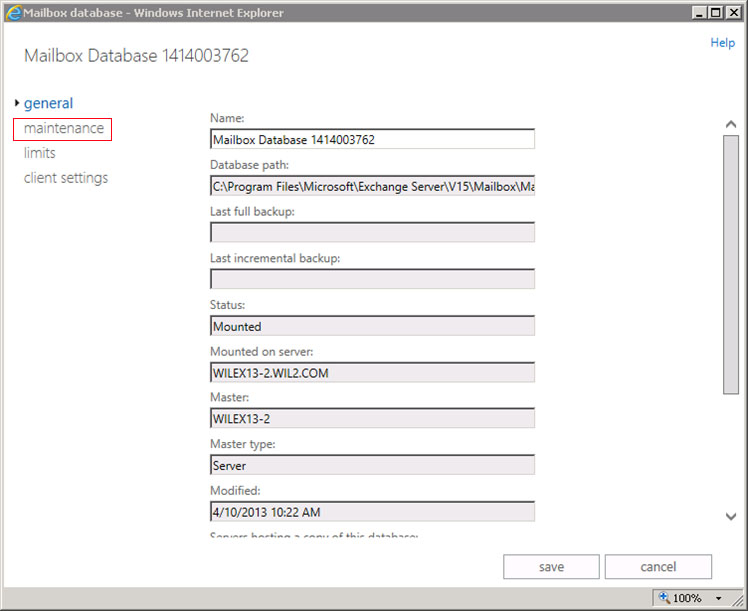
In the maintenance page, click browse following the Journal recipient field:
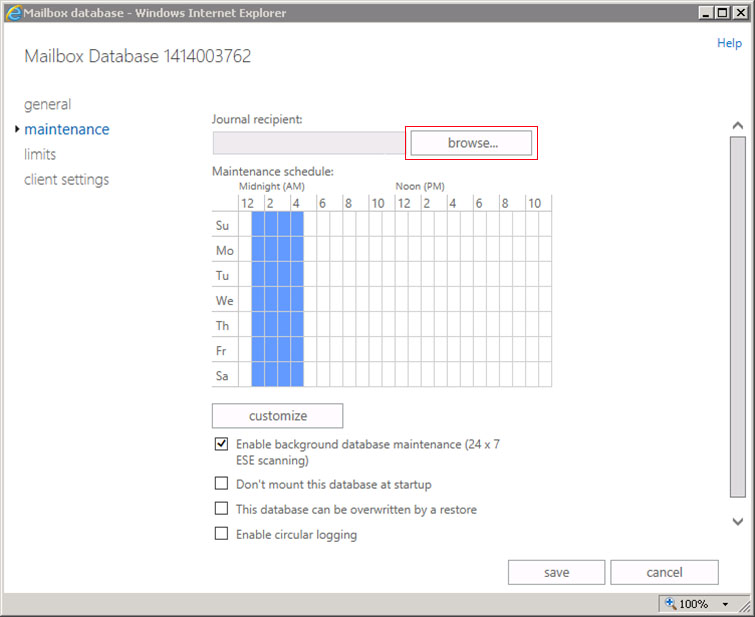
Navigate to and select the destination location for journaled messages:
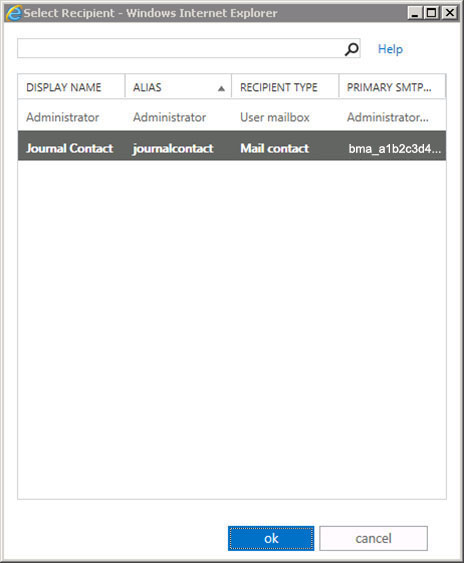
Click ok to select the journal message recipient. The recipient displays in the maintenance page:
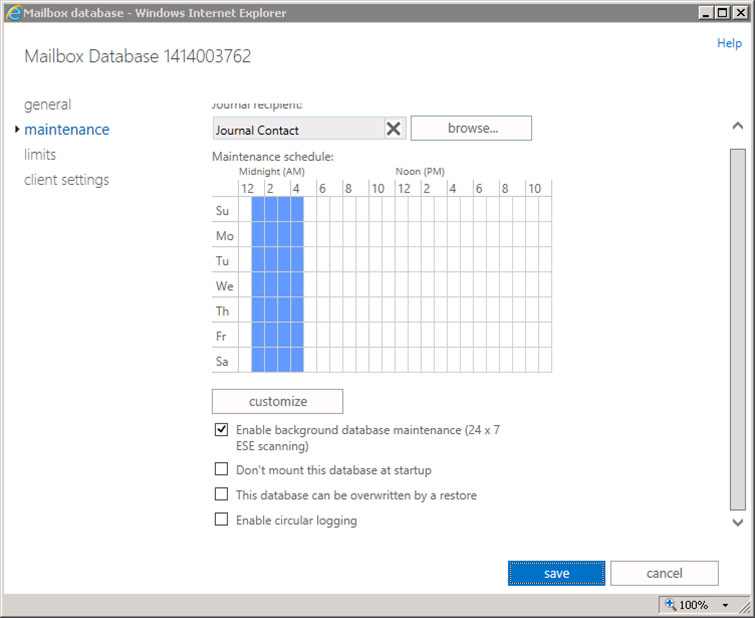
Click save to save your settings.
Once you complete Option 1 or Option 2, the configuration is complete and journaled mail is forwarded to the Barracuda Cloud Archiving Service.
Note that journaled mail via SMTP has a maximum message size limit of 150MB.
Log in and go to the Basic > Search page in the web interface to verify that new mail is being processed. New Barracuda Cloud Archiving Service journaled messages are indexed upon receipt. Messages are indexed and available in the archive within a few hours after journaling.
Barracuda Networks recommends hiding the Journal Contact–as well as any mailbox set up for undeliverable journal reports–from the GAL so that mail is not sent directly to these accounts.


















